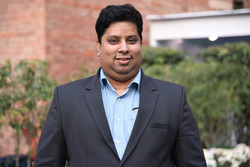Over the past week, entire India, as well as concerned people from around the world, have witnessed how the unseasonal rains have brought Chennai to a standstill. Although there is a number of reasons that may have contributed to the situation, it is clear that such situations need not cause issues that are facing citizens in Chennai and other flood-hit areas.
Unfortunately, this is not the 1st time we are witnessing people suffering from natural or man-made calamities and despite all the promises that will be made in the aftermath of this disaster, this won't be the last. Just last year in September, we witnessed a similar situation in Jammu & Kashmir, where people were left stranded for a week with no access to electricity, water, and communication. Even Mumbai was brought to a standstill earlier this year on June 19th due to heavy downpour in a single day.
This situation can happen anywhere, as it was demonstrated a couple of years back in New York with Hurricane Sandy. Even in the USA, with all the modern facilities and latest grid technologies being deployed, most of New York City and nearby cities in New Jersey were left without electricity and communication for over 10 days in aftermath of Hurricane Sandy.
What is different is that after the NY disaster, US utilities have significantly altered the way they plan for such disasters and have worked on making the grid more resilient. Now is the time that the Indian government, states as well as utilities and telecommunication companies adopt similar measures for improving disaster preparedness in India. We need to change the way we plan for backup power and critical infrastructure operations for the routine power cuts. SO far the easiest way for planners has been to make a provision for a diesel generator as backup power and claim that there is a 24*7 backup power available. But all these natural disasters have demonstrated that during such disasters, these generators could get flooded or the diesel supply gets cut and as a result, critical infrastructure such as hospitals, telecommunication facilities come to complete standstill.
Luckily, technology advancements have now made it possible for the deployment of distributed renewable resources such as rooftop solar, small wind and energy storage that can at least provide for mission-critical backup to keep the telecommunication lines, hospitals and other important facilities operating. In fact, right now, 100s of social entrepreneurs are deploying such solutions all over India trying to meet the needs of 300 million+ Indians who are still not connected to the electricity grid.
It is high time that similar technologies and microgrid planning principals should be used for all our major cities. If we can design and implement these solutions in a smart way, then the costs of such solutions would be much much smaller than the cost and pain of sufferings caused by such disasters. Central Government has released over 1940 Crore for relief and rescue operations in Chennai just in the past 10 days. We need to now allocate appropriate funding for according similar situations in the future.
According to various Industry estimates, Indian consumers already have over 70 GW of diesel gene sets installed and annual sales of lead-acid batteries for stationary applications including backup power and UPS is almost $2 billion. But without grid power, most of the consumers will run out of power to win in a couple of hours. With the deployment of renewable microgrids and advanced storage technologies, this situation can change quickly. Various new technologies such as Li-Ion batteries now make it possible to recharge batteries within 15-30 minutes, so that with partial grid connectivity or with distributed renewables, one can ensure electricity supply to meet at least the critical needs of the facilities.
We just to need to collectively decide, how long we want to wait for the next disaster to strike and again go through the same outcome, or can we adapt and be prepared for the next unexpected disaster. India Energy Storage Alliance has been working for the past 3 years to create awareness about advances in technologies and business models for both energy storage and microgrids in India. IESA is hosting 3rd international conference and expo dedicated to energy storage and microgrids in New Delhi next week. Energy Storage India 2015, starting on Monday 7th December at India Habitat Center in New Delhi is bringing together 50+ global thought leaders and experts to India. We will be discussing the potential solutions to such disasters at a microgrid workshop on the 7th as well as a utility and microgrid panels on 9th December.










